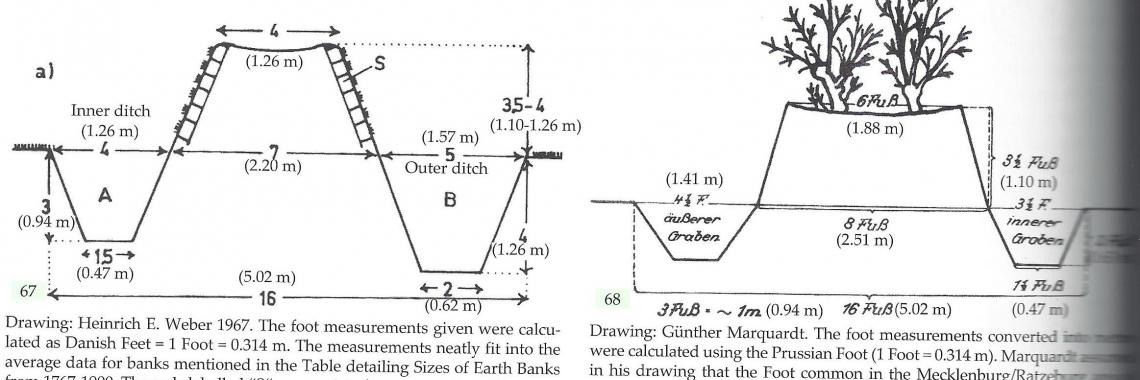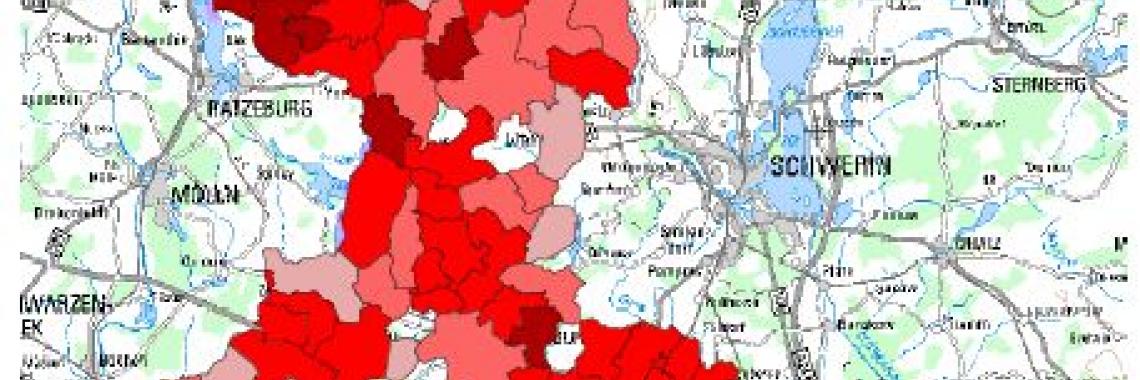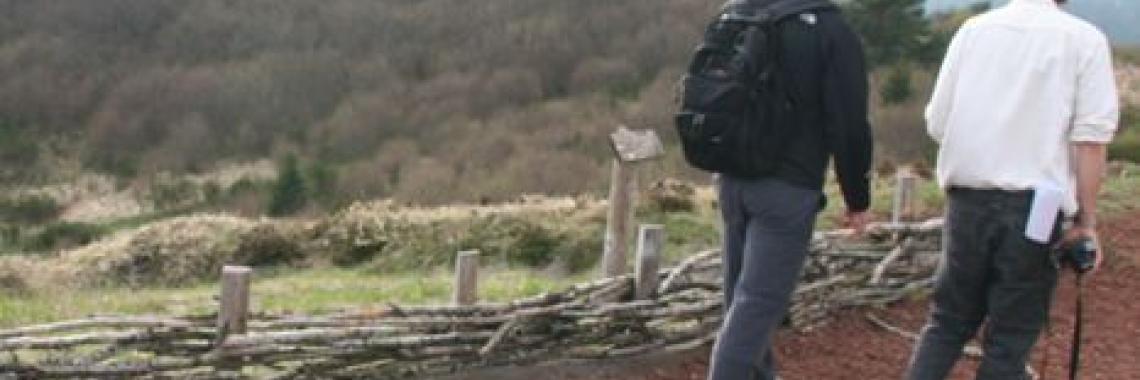Enclosed land in Germany
26.04.2017, by Alexandra Kruse
Research: Alexandra Kruse & Michael Roth; upload: Bénédicte Gaillard. The entries are still in process.
Fields can be enclosed by plants (initially planted) or with stones. The stones vary from region to region, according to geological aspects. The origin of the stones (in northern Germany) are the ice ages, which have covered parts of Northern Germany, especially the two last ones
- The origine of the word „Hecke“ is „Hag“ (enclosure), Germanic origin, it means protection against attact, wind, wild animals
- In the old German language (althochdeutsch) the word is hegga , American English: hecg, British English: hedge, French: haie, Dutch: heg. All terms include the same radical „hag“, to enclose and the syllable heck means to protect
- In Germany exist many names for villages and locations, with hagen or ha(a)g or which shows the meaning that hedges have had.
- Linear plantations of willow trees exist since the 16th century (police regulation from 1572): We have several regulation about the construction of hedges in forest regulation, in the 18th century.
- A milestone was the introduction of the „Koppelwirtschaft“, beginning of 18th century. This was a kind of orderly, regulated field meadow production cycle, with several years of grazing within the crop rotation. In Mecklenburg (north-east of Germany) was the 7 years rotation, consisted by three years crop, three years of grasing and one year fellow land.
- “The first hedge banks developed more than 10.000 years BC from the dead brushwood hedge, the woven vertical branch fence and the bent woven hedge. They were used to provide a primitive form of protection against wild animals and plundering hordes.” MÜLLER, G. p. 334
- “There is prehistoric evidence of bank-like enclosures around fields, although it is not known whether they were planted with shrubs, on the Geest and in Eastern Westphalia (Groenmann van Waateringe 1970/71; Hohenschwert 1978). Most likely, hedge banks were also widely planted, since at least old Germanic times… “POTT, R.
- There are several remains in different parts in North and South Germany of earth banks and prehistoric, celtic fields. A primeval field at Flögeln, close to Cuxhaven (north) originally covered an area of 100 ha with banks that are between 8-16 m wide and 0.8 m high. MÜLLER, G. 334
- In the modern times, hedge banks have been constructed during the so called agricultural reform years in the 19th century (s. above).
- There are many regional forms.
54.363799, 9.751482
51.517735, 6.704564
50.742675, 6.830074
- Jürgen Peters, Burkhard Klinkhammer: Kulturhistorische Landschaftselemente. Systematisieren, kartieren und planen – Untersuchungen in Brandenburg. In: Naturschutz und Landschaftsplanung. Jg. 32, Nr. 5. Stuttgart 2000, S. 147–152
- Biber, J. (1979): Bedeutung und Funktion der Hecken für die Vögel. – Vögel der Heimat 49 (5): 98-101
- Blüthgen, J. (1946): Die Schaffung der Heckenlandschaft in Mecklenburg-Vorpommern und ihre landwirtschaftliche Bedeutung. Manuskript. Greifswald.
- Drachenfels, O. von (2011): Kartierschlüssel für Biotoptypen in Niedersachsen. Niedersächsisches Landesamt für Ökologie, Hannover, 326 S.
- Eigner, J. (1975): Unsere Knicks im Natur- und Landschaftshaushalt Schleswig-Holsteins, Landesamt für Naturschutz, Kiel. Heft 7, S. 172-176. - many publications by Eigner with special regard to history, ecological function and maintenance of hedges
- Müller, G. (2013): Europe’s field boundaries. Neuer Kunstverlag, 2 volumes, 1200 p.
- Protected by law: Germany, in the (in some) federal states (M-V: if >50m)
- (Re)construction is supported and co-financed
- Plans where, what and how to renew hedges
- Good awareness by planners
- Biotopverbund
Hedges are endangered, as for many years, farmers have destroyed them in order to get bigger fields, easily to farm with tractors. Further dangers:
- Clearing / cutting
- Too close with machines (plough etc.)
- Too much fertiliser/ deposit of fertiliser and pestizides
- Cutting not adapted (wrong cutting)
- Waste/litter
- Damages by animals (biting)
It is still used to day and in some countries even re-introduced or repaired, while it was damaged and not maintained for several decades. Today there are regional programs to re-introduced enclosures and to explain, how to do so.
- In the north and north-east of Germany it is related to the so called “Koppelwirtschaft”, the new organization of land in the 19th century.
- In the south of Germany it is also related to the so called “Realteilung” (but only locally), where the land of one farm was divided among all children of a farmer.
- We find it in the river slopes in the wine fields
- The structure, composition and composition of the hedges varies according to their appearance in Germany. The maintenance differs regionally.
-
ownership can be private or communal
- wine production
- wicker baskets
- hurdle works
Because of its relevance in biodiversity and as a meaning against wind erosion. In the following some examples for research done.
- climate function of walled hedges
- Function as protection against wind erosion
- From my point of view there is a high awareness among people that deal with it: Farmers (do not always see them positively), landscape planners, biologists, ecologists
- I have no idea, to what extend the local people are aware of their meaning and history, although at least in North-Germany “everybody” knows the term “Knick”, which is the special term for the Northern type of hedge.
- In Germany landscapes and landscape elements are mapped. Just to give one example from the Mecklenburg, the following distinctions have to be made in official mappings:
With Plants
- With a mixture of plants; with and without earthwalls
- Terms (just to give a short impression about the number of terms):
- Feldhecke, Gehölzsaum,
Windschutzpflanzung;
Siedlungsgebüsch/-hecke - Wallhecke
- Knick
- Steinfurchenhecken
- Hecken auf Landwehren
- Feldhecke, Gehölzsaum,
- With only one type of plants,
mostly next to streets/roads- Baumreihe
- Allee


















